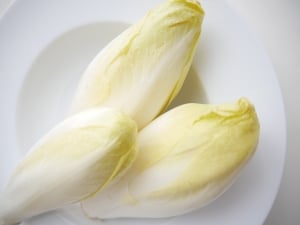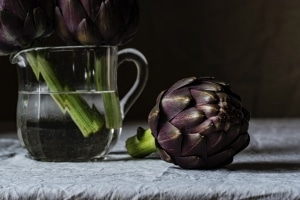Polydextrose in detail
Foreword
I’ve created this blog post because I noticed that there are a lot of ambiguities about fibers, both natural and synthetic. For example, I saw that many consumers have been influenced by (online) information, written down by people with limited knowledge about fiber and the science surrounding fibers.
All that matters are correctly conducted objective studies.
I personally think that lifestyles & diets and religious practices are quite related to each other. Spirituality is extremely important and should not be confused with religion. Religion was born from spirituality and not the other way around. The dogma concerning “natural” and “synthetic” is also relative. Arsenic and petroleum are also natural products …
As you read this post I would like to ask you the following question: “I am giving you a pill that restores all build up oxidation during your life and extends your life by 150 years, but the pill is man-made, would you take that pill?”. In other words, do you put aside a dogmatic thought / belief in terms of natural / synthetic or do you remain a victim of dogma?
What are fibers
Fibers are complex sugars, also known as polymers. They are difficult to digest for the body and can be natural or man-made. They consist of insoluble fiber such as cellulose from the cell walls of fruits and vegetables, grains, legumes, etc.
In addition, there are also soluble fibers which are divided into 2 categories:
- Viscous: such as pectin (fruit), mucilage (around cocoa beans), gums (guar)
- Non-viscous: such as inulin (chicory), polydextrose (man made), isomaltooligosaccharide (tapioca)
Soluble fibers
Because it was difficult worldwide to agree on a global definition for dietary fiber, it was agreed worldwide that a dietary fiber can be defined as: “3 carbohydrate polymers with a polymerization degree of 3 monomers that cannot be hydrolyzed in the small intestine by endogenous enzymes “.
Because fibers are resistant to digestion and absorption within the small intestine, they go to the colon where they are partially or completely fermented
Monomers
Monomers (simple sugars) are molecules that can polymerize to form giant molecules.
Polymers and oligomers
Polymers and oligomers (a type of polymer) are often thought of as synthetic, but natural carbohydrates such as starch or our own body’s glycogen are also polymers.
Within organisms and plant extracts, oligomers can be found as biochemical compounds. “Polymerization” is the name used to make poly and oligomers.
Polymers can be made by coupling a number of monomers through covalent bonds. The mass of an oligomer is much smaller than that of a polymer.
The difference with a polymer is that it can be a huge molecule (like carbohydrates) with a large number of monomers. They can consist of linear and simple structures, they can be branched into complex structures and even form complex 3D structures with cross connections.
The properties of oligomers are completely different from those of polymers even though they have similar monomers.
What is polydextrose
Polydextrose is a man-made soluble fiber.
A non-viscous polymer (a multiple sugar) consisting of ingredients of natural origin: glucose from starch, 10% sorbitol extracted from berries and 1% citric acid. A polymerization is applied to the glucose molecule in the vicinity of sorbitol and a suitable acidic catalyst (the citric acid). These are vacuum heated at a high temperature. This results in a mixture of glucose oligomers with an average degree of polymerization of 12, but ranging from residual monomers to degree of polymerization above dp> 100.
The role of polydextrose in food?
Sugar plays a major role in the texture of a product. In addition to a sweet flavoring, sugar is also a bulking agent. If, for example, with a cake of 1kg total mass, you have to extract the 400g sugar, then your recipe is of course no longer in balance.
Polydextrose mimics the properties of sugar, does not have the same sweetness as sugar, but can be seen as an equivalent bulk agent.
However, polydextrose has many more benefits than sugar.
Properties of polydextrose on the blood level
Polydextrose is partially digested by gastrointestinal transit. It reacts as a guide for saccharolytic fermentation through the colon. [1]
It has a low calorific value: around 1Kcal / g and a GI of 4 to 7 with a glycemic load of 1 (for glucose this is GI 100 and for sucrose GI 65).
In this study [2] it is shown that polydextrose protects blood levels against a potential rise in glucose. The glycemic index was reduced from 100 to 88 when 12g of polydextrose was taken together with 50g of glucose in healthy adults.
The low glycemic index of polydextrose makes it a very friendly and desirable ingredient for individuals burning lipolysis metabolism such as medical or nutritional ketosis lifestyles, as well as chronic diseases such as diabetes.
Benefits of polydextrose
Polydextrose has scientifically substantiated fiber properties: a shorter transit time, a reduced acidity (PH) of the bowel movement, improved bowel consistency as well as easier bowel movements [3].
Polydextrose is safe to use and is much more tolerated than natural soluble fibers such as inulin and oligosaccharides (chicory), resistant maltodextrin (corn fiber) or isomaltooligosaccharides (tapioca fiber).
It has an average laxative threshold of 90g / day and up to 50g per dose [4], which is much more than these concentrated “natural” fibers mentioned above.
Effect of polydextrose on the microbiota
Many benefits are associated with the effects of polydextrose consumption. For example, it promotes the growth of beneficial organisms such as bifidobacteria and lactobacillus, while suppressing the growth of harmful organisms such as clostridia. [5] [6]. Polydextrose also improves the absorption of magnesium, calcium and iron [7].
When polydextrose enters the colon, endogenous bacteria ferment them into beneficial short-chain fatty acids such as butyrate (butyric acid), acetate (acetic acid) and propionate (propionic acid) [8].
Polydextrose has the same amount of short fatty acids during the fermentation process compared to other dietary fibers such as fructooligosaccharides, inulin, pectin and arabinose. These metabolites, created after fermentation, are an important source of energy for the cells of the intestinal mucosa.
Butyric acid is even preferred over glucose and is the main source of energy for the cells of our gut. Propionic acid is an important factor for insulin sensitivity.
The “glycemic index” (GI) and “Recommended Daily Intake” (RDI) of natural fibers and polydextrose
When we compare the GI and RDI of polydextrose with those of similar natural fibers, we see that the GI is lower, and the RDI higher:
- A GI of 35 for tapioca fiber (or IMOs = Isomaltooligosaccharides). This is as much GI as maltitol, by the way. IMOs are widely used in keto bars and use the commercial marketing term “tapioca fiber”. Tapioca fiber is not suitable for keto and has an RDI of 30g / day (Recomended Daily Intake) [9]
- A GI of 25 for corn fiber (or RMD = Resistant MaltoDextrin).
This fiber has an RDI of 25g / day [10]. - A GI of 14 for native inulin with an RDI of 10g / day [11] and Oligosaccharides with an RDI of 5g / day [11]. People sensitive to FODMAPs should avoid inulin (Fermentable Oligosaccharides, Disaccharides, Monosaccharides And Polyols) [12]
- A GI of 4 to 7 for the Polydextrose polymer with an RDI of 90g / day and 50g per dose [4].
Polydextrose versus natural soluble fiber
Does the above title means that natural soluble fiber is bad? No.
When consumed in a diluted form through the intake of plant foods, they also yield wonderful results. They are simply not practical because they are so concentrated and fermentable. Manipulating the molecular chain of a natural fiber is not natural and personally I see, ethically, little difference between “natural” fibers and synthetic ones such as polydextrose.
Conclusion
There is a lot of advertising about the positive properties of fiber. Especially on “natural fibers”, which can really be questioned due to their concentrations.
Everything in this regard must be considered in function of the intestinal microbiota (intestinal flora), which can be manipulated and built up by yourself.
Eating 3g of Inulin dilluded in a whole fresh chicory , or eating a spoon of concentrated inulin trough a cookie is not natural even if the products are “all natural”. Due to the high fermentability of natural fibers, proliferation of the intestines is much more likely to happen with inulin than with polydextrose. The poison is always in the dosage.
Our body does not participate in what we think about ethical concepts around natural and “constructive” synthetic food. It takes the molecules (natural or synthetic) and processes them.
A rich diverse microbiota can be build trough the consumption of various types of fiber. It is important for the creation of certain hormones, vitamines , short chain fatty acides and much more.
There are constructive synthetic substances and there are dangerous natural substances and vice versa: dangerous synthetic substances and constructive natural substances.
The cookies that doesn’t contains sugar, is plant-based, organic and low calorie, still stays a cookie and won’t nourish the body.
Scientific references
[1]: https://www.ncbi.nlm.nih.gov/pubmed/24736314
[2]: https://www.researchgate.net/publication/12227484_Studies_on_the_effects_of_polydextrose_intake_on_physiologic_funtions_in_Chinese_people
[3]: https://www.semanticscholar.org/paper/Polydextrose-studies-in-animals-%2C-human-and-in-%3A-of-Putaala/7989e89bf56e7e2f0872876e7eb3b3f7a52c3546
[4]: https://pubmed.ncbi.nlm.nih.gov/15234083/
[5]: https://pubmed.ncbi.nlm.nih.gov/20553905/
[6]: https://pubmed.ncbi.nlm.nih.gov/20370946/
[7]: https://pubmed.ncbi.nlm.nih.gov/22394255/
[8]: https://pubmed.ncbi.nlm.nih.gov/22085650/
[9]: https://www.fda.gov/media/101627/download
[10]: https://www.ncbi.nlm.nih.gov/pmc/articles/PMC5122613/
[11]: https://pubmed.ncbi.nlm.nih.gov/20497775/
[12]: https://www.ncbi.nlm.nih.gov/pmc/articles/PMC3887576/





